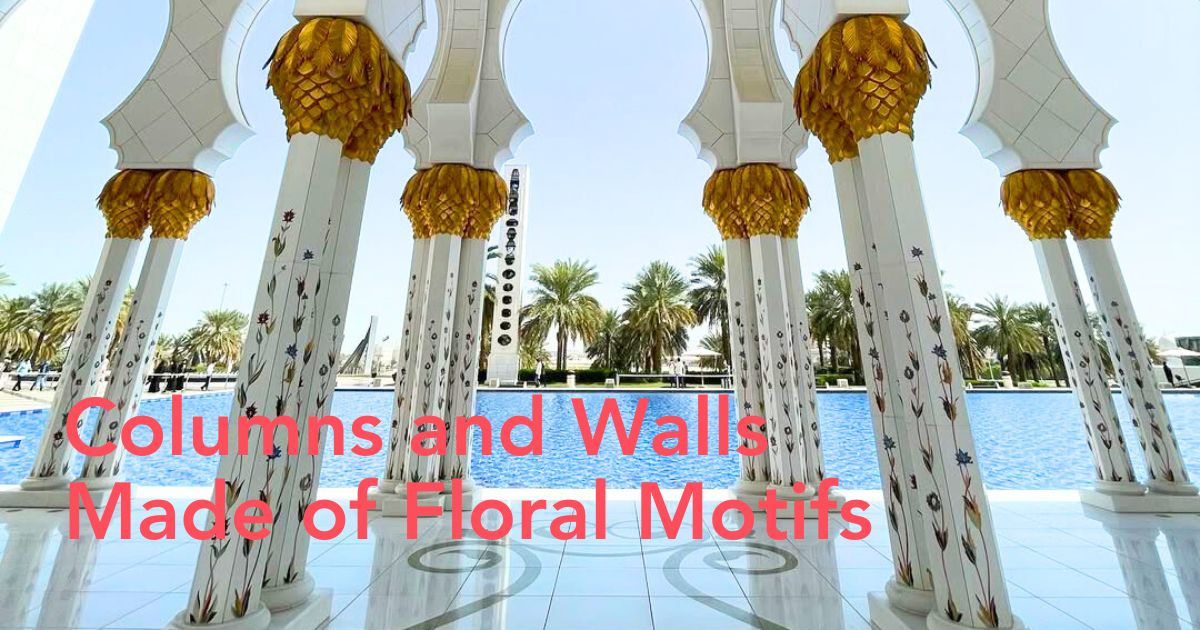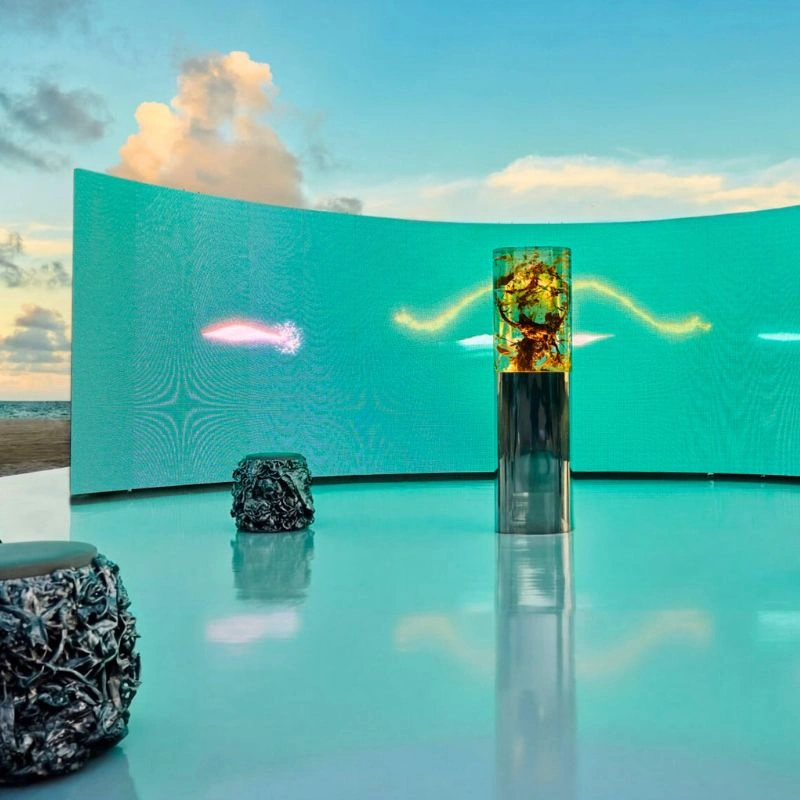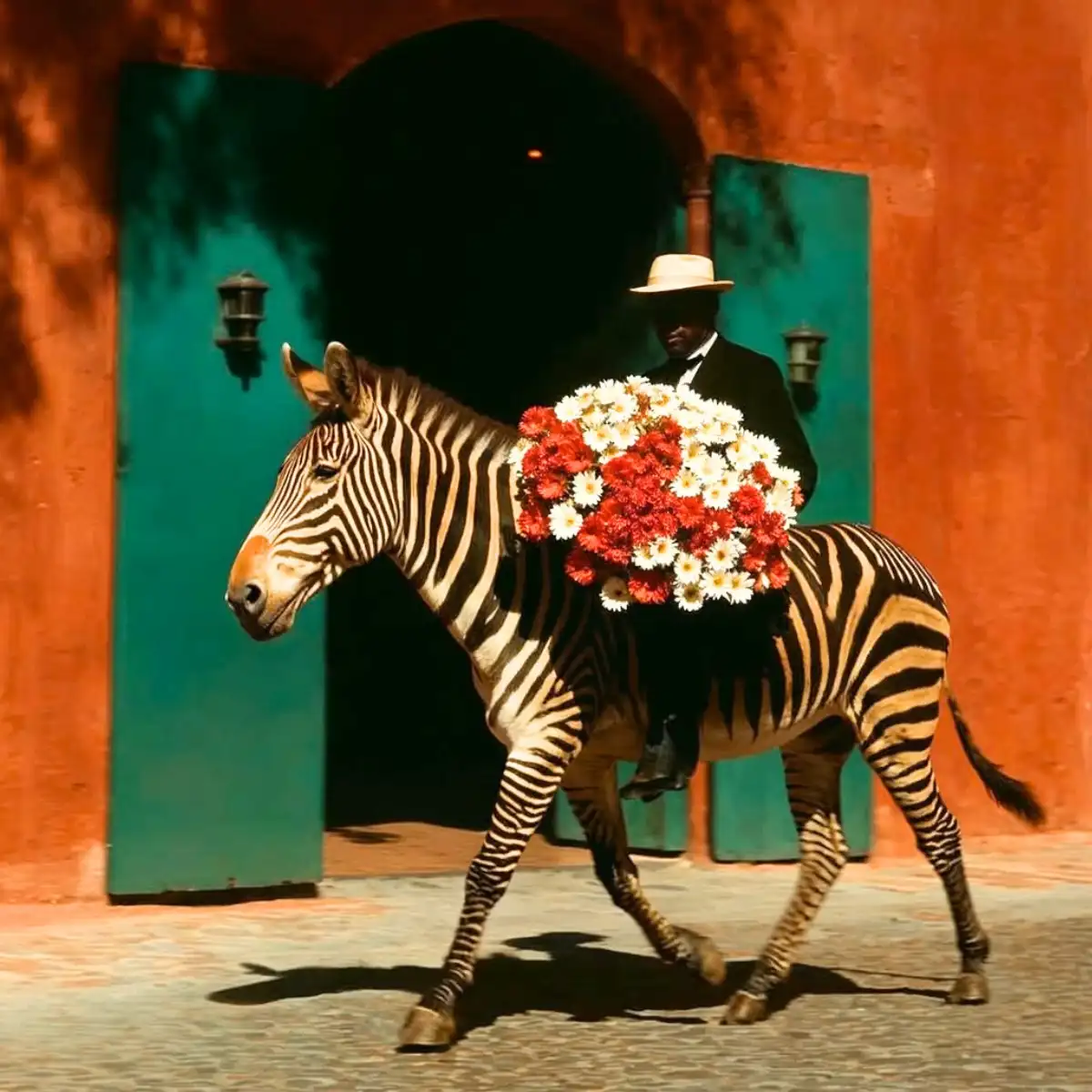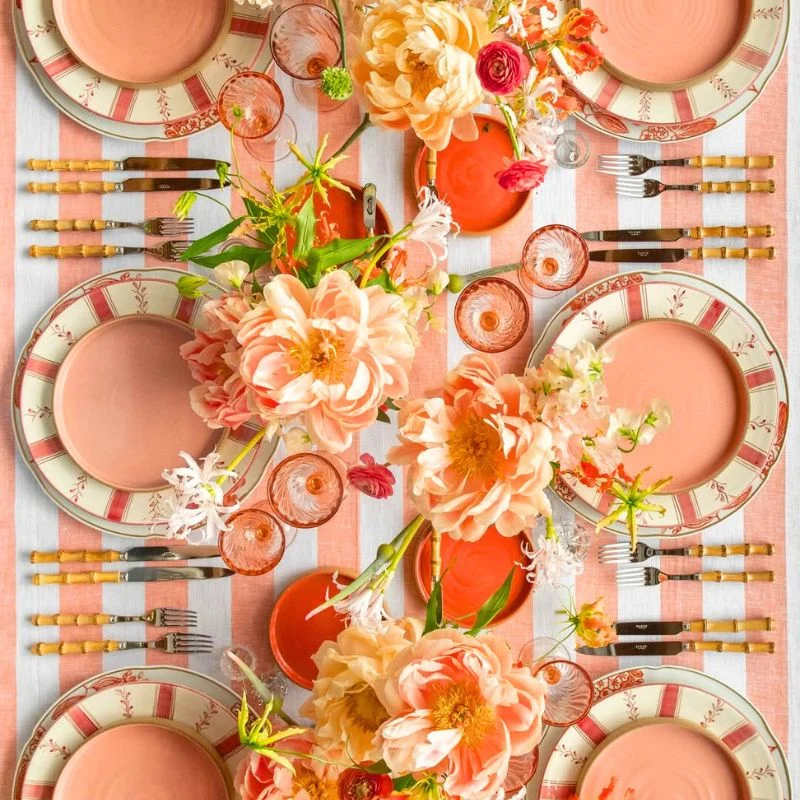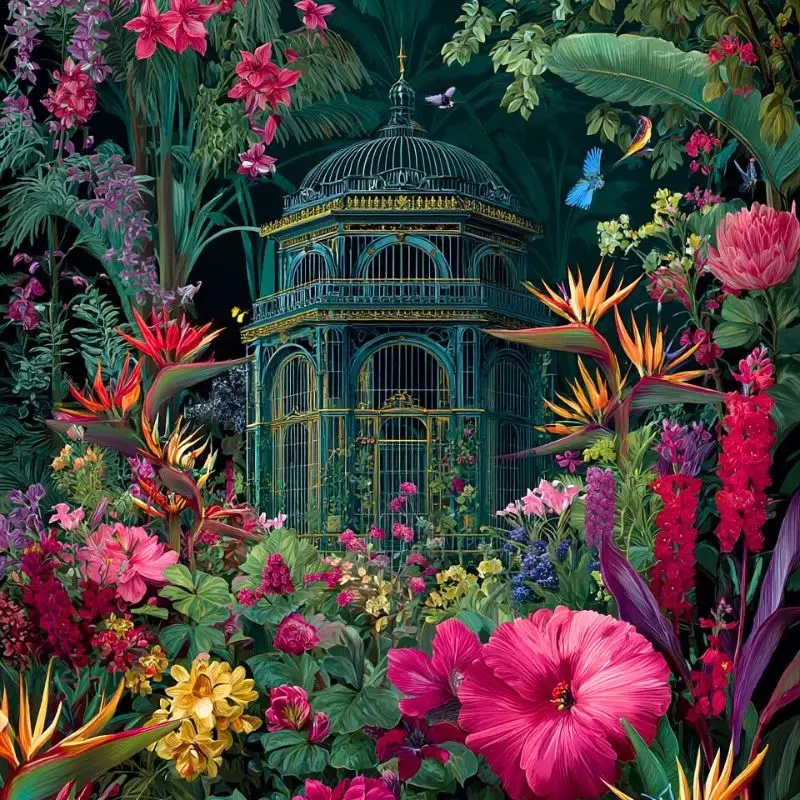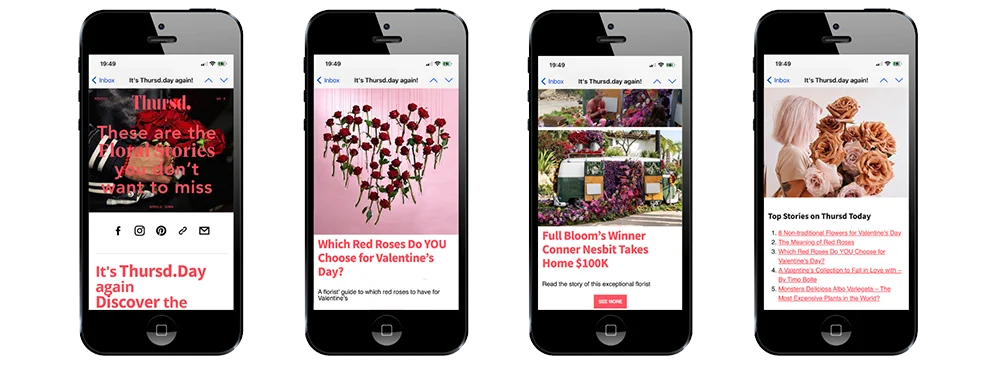One of the largest and most prestigious projects that Fantini Mosaici has ever worked on, the Sheikh Zayed Bin Sultan Al Nahyan Mosque in Abu Dhabi is sometimes referred to as the ‘Flower Mosque’ because of the lush floral motifs of its mosaics, which the legendary Italian company created.
Floral Splendor Across Every Arch at Abu Dhabi's Most Renowned Mosque
Sheikh Zayed Mosque is a vision of paradise brought to life in marble and stone. When Sheikh Zayed bin Sultan Al Nahyan dreamed of a house of worship that would unite the world through beauty, he turned to nature for his greatest inspiration. The result is a sanctuary where flowers, vines, and leaves seem to grow from the walls themselves, weaving together Islamic tradition, handmade art, and the language of the garden.
Take a close look at all the floral details in one of the world's most renowned mosques
The 17,500-square metre Sahan (courtyard) is said to be the world’s largest to be made from marble mosaic. Created by Fantini Mosaici, it features gigantic flowers found in the region, as well as irises, tulips, lilies, and roses. Floral motifs and designs appear throughout the mosque: on the floors and walls, even in the hand-carved marble borders.

Once in the courtyard, you'll step into a garden without soil. This open expanse glows beneath the desert sun, reflecting a vision of paradise described in the Holy Qur’an — a place of shade, flowers, and flowing life. The design was carefully imagined so that even under the brilliance of daylight, the flowers seem to float on a white sea of marble, welcoming worshippers from every direction.
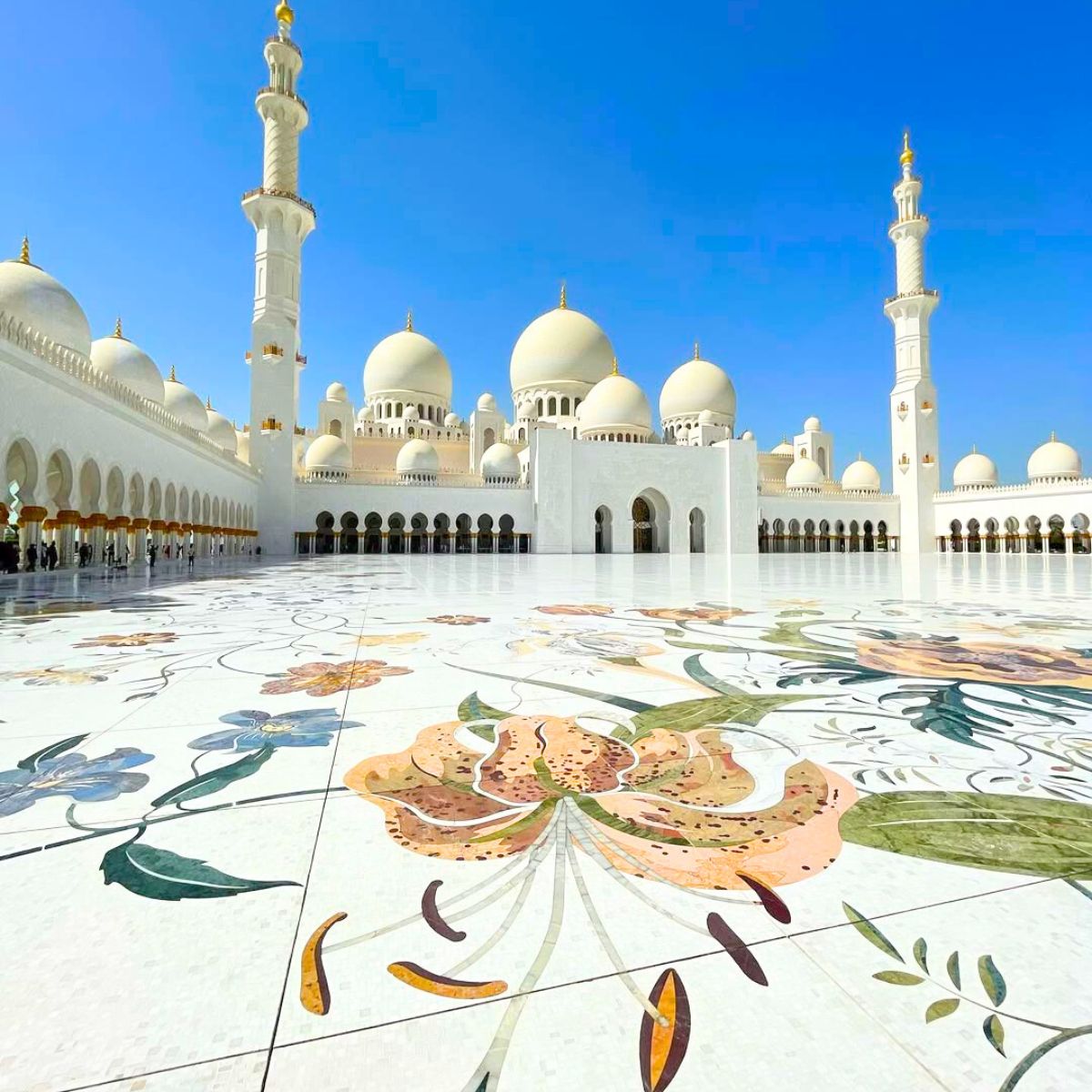
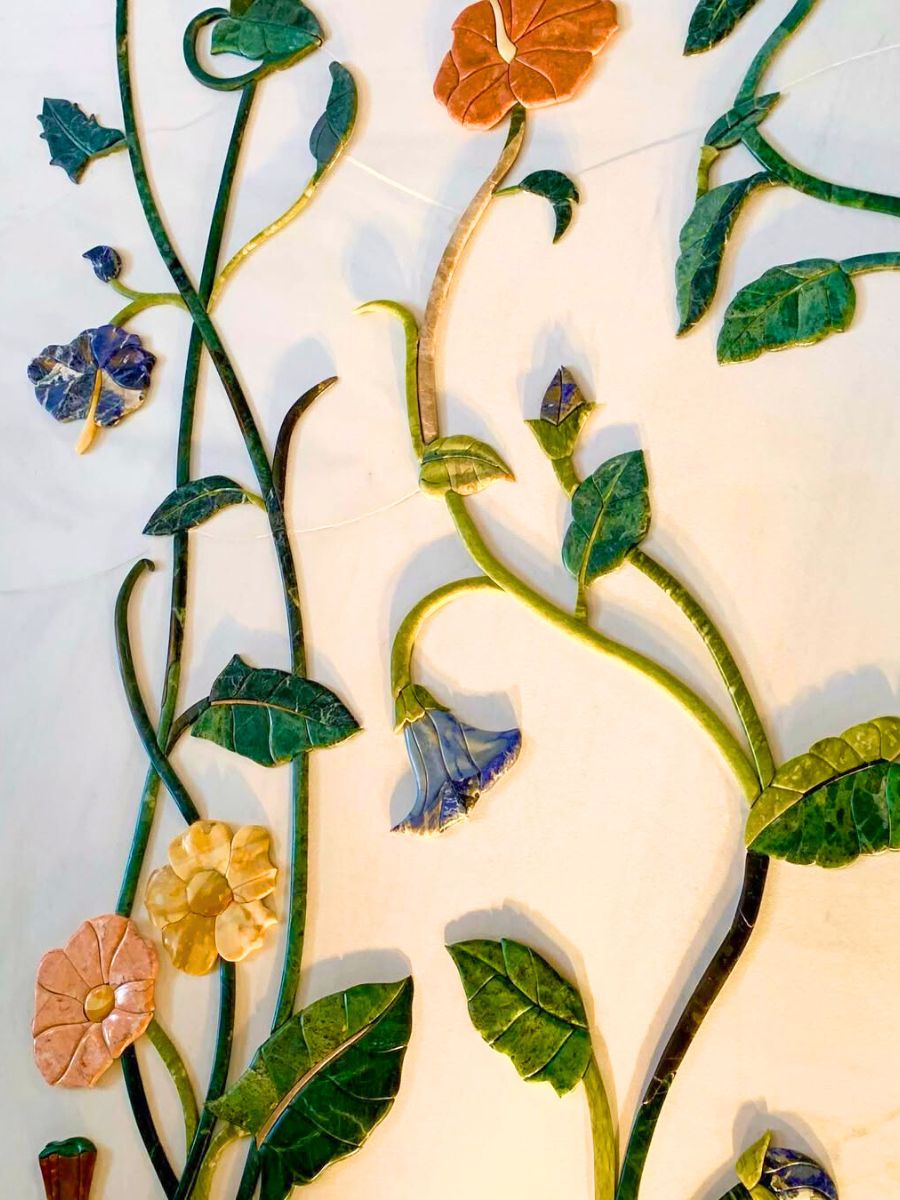
Columns Like Garden Stems
Around the courtyard and inside the mosque, hundreds of columns rise like tall, graceful stems. Each is inlaid with mother-of-pearl and semi-precious stones — lapis, agate, amethyst — forming floral patterns that climb upward toward golden capitals shaped like palm fronds. In the cool, shaded colonnades, these columns feel almost alive, as if carrying the fragrance of a garden into the heart of the divine temple.
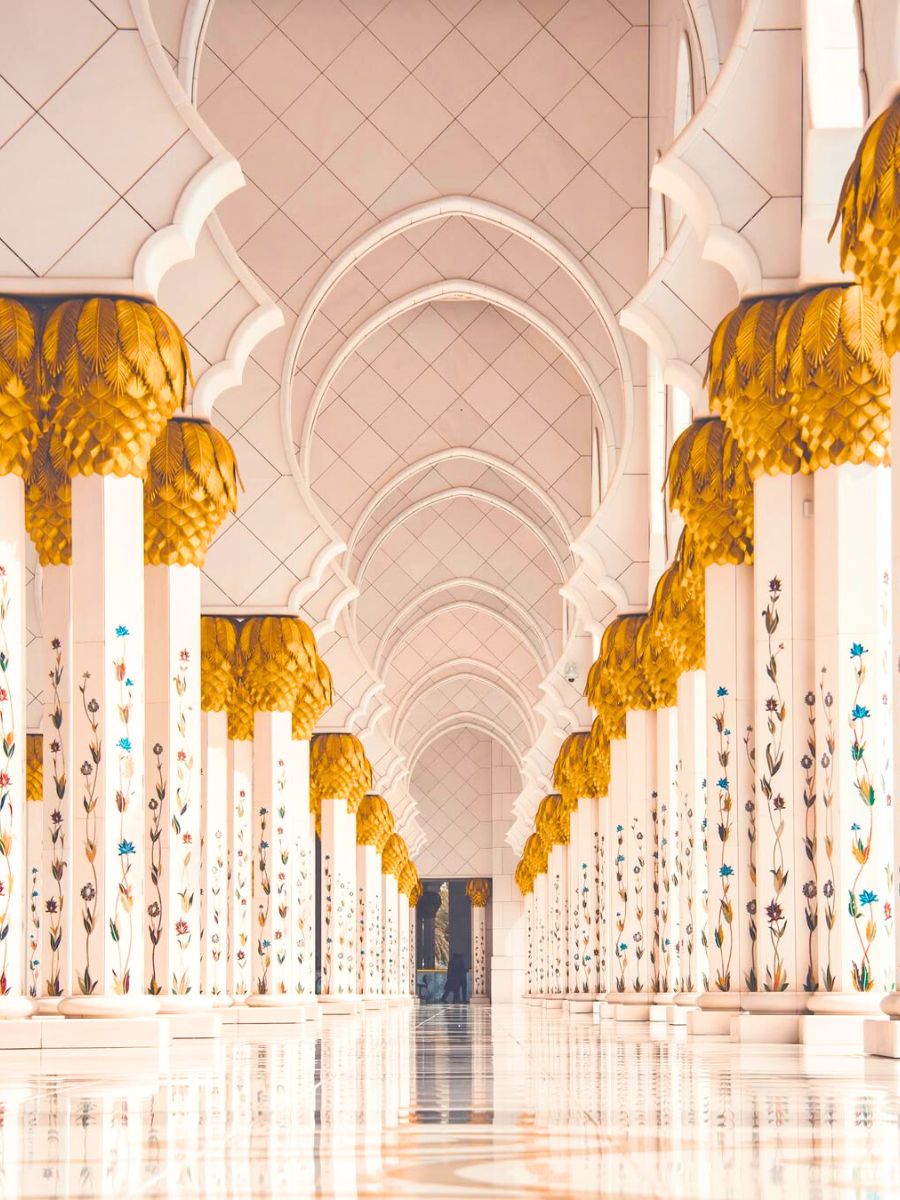
Inside, the main prayer hall welcomes worshippers in a space where every detail speaks the language of flowers. The walls are alive with floral inlays, their patterns illuminated by soft natural light filtering through vast arched windows. The Qibla wall, facing Mecca, is inscribed with the 99 Names of Allah, each framed in floral designs — a union of calligraphy and garden. Above, the chandeliers echo the form of date palms, their crystal fronds shimmering with golden light.
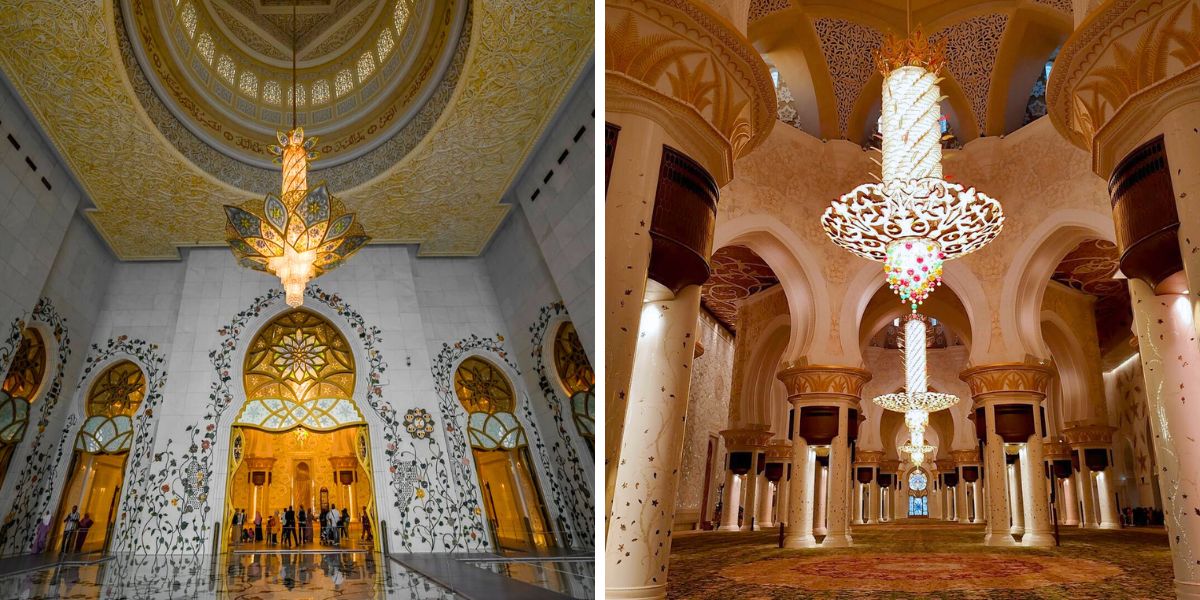
Beneath your feet lies the world’s largest hand-knotted carpet, a soft field of green adorned with swirling floral forms, grounding the entire space in the beauty of the earth.
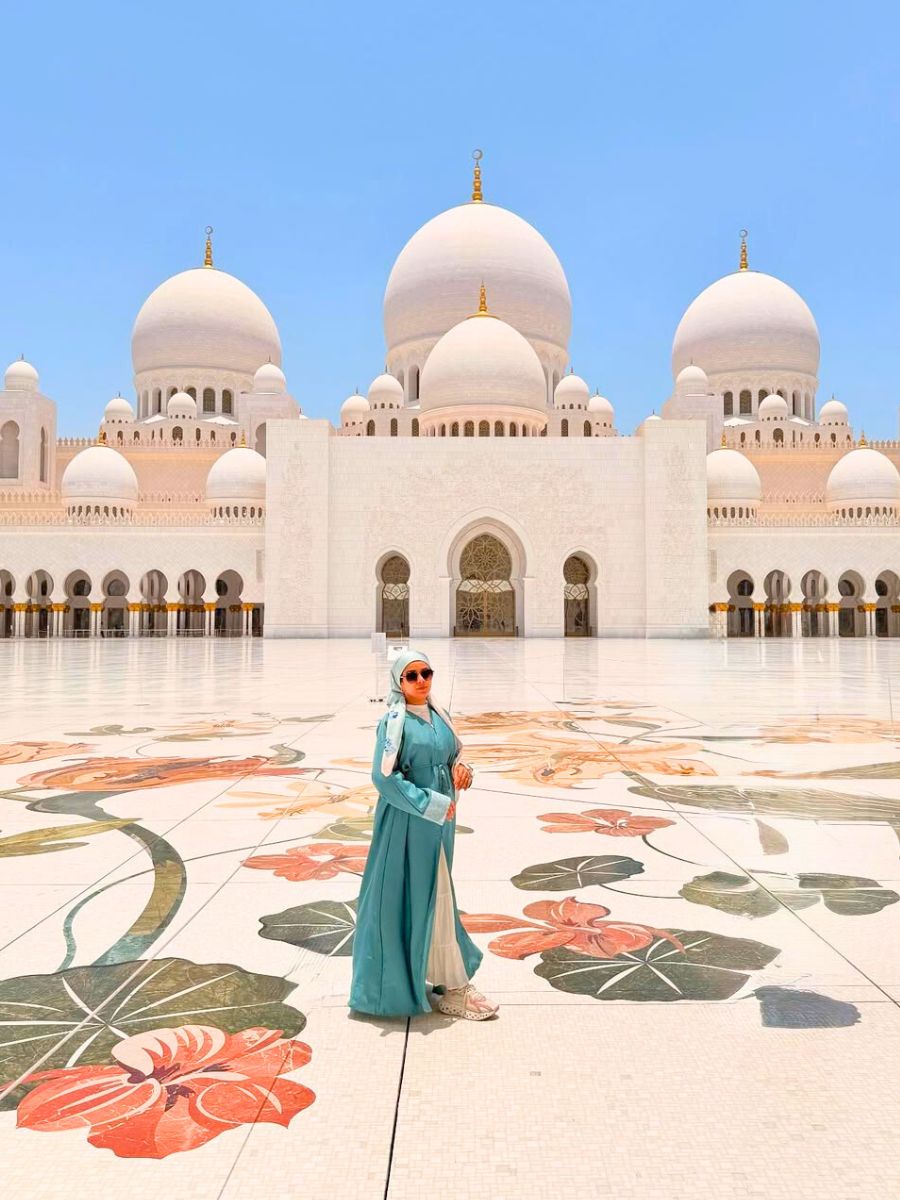
A Message in Every Petal and Flower
The floral designs are not decoration for decoration’s sake. In Islamic heritage, gardens symbolize the eternal paradise promised to the faithful. Sheikh Zayed’s choice to place flowers in every corner of the mosque was a way of inviting worshippers to experience that vision on earth — a space of peace, purity, and divine beauty.
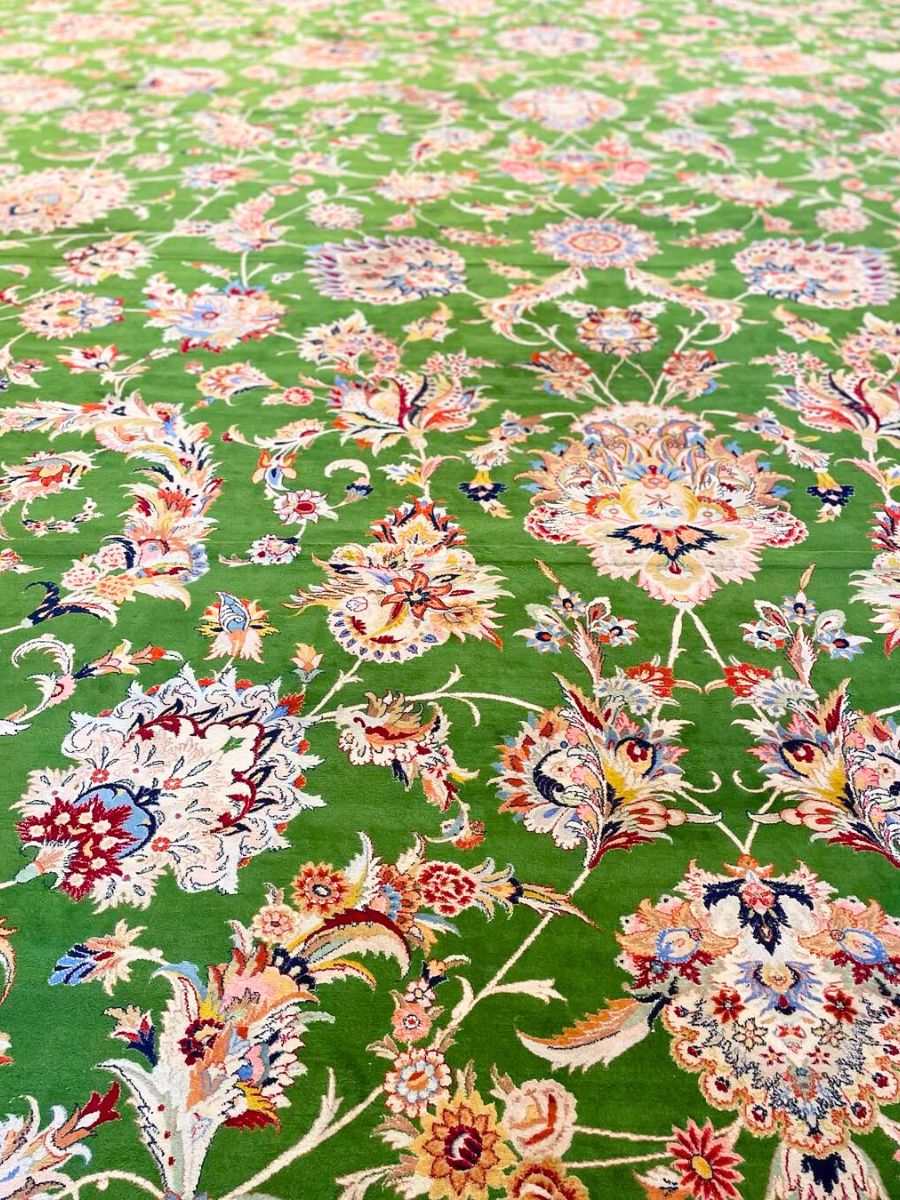
The flowers chosen span cultures and continents, just as the artisans who created them came from all over the world, making the mosque itself a living embodiment of unity. Every visitor who walks through its gardens of marble and light carries away more than photographs. Ultimately, you end up carrying the memory of a place where faith is in full bloom.

